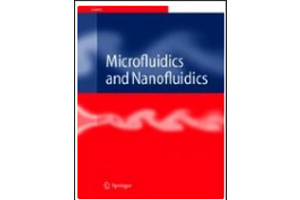Microfluidic Molecular Separation for Purine Derivatives Analysis
A particle-based microfluidic molecular separation integrating surface-enhanced Raman scattering sensing for purine derivatives analysisYi‑Ying Wan et al February 20, 2019
Abstract
Based on its highly specific and non-invasive features, surface-enhanced Raman scattering (SERS) has been applied for analytical chemistry or biological applications, such as identification of chemical compositions, cells or bacteria. However, if the targeted sample consists of multiple compounds, the corresponded SERS spectra would be quite difficult to analyze. To address above problems, we developed a particle-based microfluidic molecular separation (PMMS) integrating SERS substrate to separate complicate molecule mixture followed by in situ SERS detection. The platform consists of an automatic microfluidic control system to precisely control the sample and reagent flow in the PMMS–SERS device, composed of a 5-μm particle-packed separation column followed by a two-dimensional Ag nanostructural substrate. To proof-of-concept, we first tested the molecule separation functionality using the mixture of fluorescent FITC and R6G dyes. Later, we introduced the hypoxanthine and adenine mixture—main purine metabolites of E. coli—into the system for on-chip separation, identification, and quantification based on acquired SERS signatures. Overall, the miniaturized PMMS–SERS system enables an easy-to-use and sensitive analyte detection, which could be beneficial in applications.
Yi‑Ying Wang, Ho‑Wen Cheng2, Kai‑Wei Chang, Jessie Shiue, Juen‑Kai Wang, Yuh‑Lin Wang, Nien‑Tsu Huang, A particle-based microfluidic molecular separation integrating
surface-enhanced Raman scattering sensing for purine derivatives
analysis, Microfluidics and Nanofluidics, 2019, 23:48
Application: Microfluidics Applications

